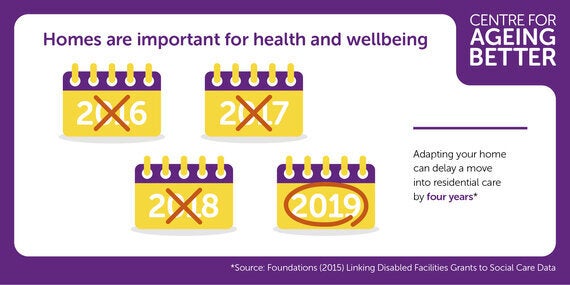Adaptations to people's homes can have numerous benefits - enabling people to manage activities of daily living, to remain mobile and active, reducing falls, and consequently reducing the costs of health and care.
The homes that people live in significantly impact on their wellbeing and ability to live their lives the way they want to. Research shows that 80 per cent of homeowners aged 65 and over wish to stay where they are. Home adaptations - ranging from hand rails to special baths or stairlifts - can help people achieve this, delaying a move into residential care by up to four years.

In our major report with Ipsos MORI we found that maintaining strong local social networks depended, in part, on how long someone had lived in their local area. Strong social connections can help people overcome disadvantages such as poor health or a lack of financial security. So enabling people to stay in their own homes by making adaptations to suit their changing needs is linked to their ability to sustain important social connections.
Home adaptations also impact positively on public expenditure. Relatively low cost home modifications have been shown to reduce falls that require medical treatment by 26 per cent, bringing potential savings of £500 million each year to the NHS and social care services.
Reviewing the evidence
We want to better understand these wide-ranging benefits. We have received valuable feedback on our draft plan for a research review on how adaptations to people's homes can help improve later life. We are using this feedback to finalise the specification for the review we will shortly be commissioning. Keep an eye on our website for the latest updates.
Alongside the systematic review, we will also engage with a wide range of professionals and practitioners involved in providing and funding home adaptations, as well as people who have adapted their homes, to add practical and personal insights to the understanding of what works. Our approach to evidence, similar to that adopted by SCIE for the prevention library, seeks to draw on practice evidence as well as academic research.
The findings from our work in this area will be used to help a wide range of people, from those considering their own or their family members' needs to policymakers and commissioners responsible for the Disabled Facilities Grant. Ageing Better wants more people to feel in control even as they face increasing difficulties with daily living due to ill health, cognitive decline or disability. We want more people in later life to feel involved, connected, active and healthy. We look forward to working with organisations like SCIE to achieve this.